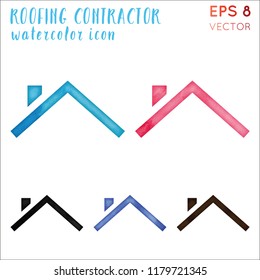Recognizing The Impact Of Climate On Commercial Exterior Paint: Necessary Insights
Recognizing The Impact Of Climate On Commercial Exterior Paint: Necessary Insights
Blog Article
Material Writer-McNamara Bendtsen
When you're preparing a commercial external painting task, do not take too lightly the influence of weather condition on your results. You need to think about factors like temperature, moisture, and precipitation, as they can make or break your paint job. For instance, did you understand that ideal conditions require details temperature ranges and moisture levels? Failing to monitor these facets can result in uneven coatings or even damages to fresh paint. Comprehending these aspects is crucial to attaining a resilient, professional end result. So, what certain weather conditions should you be wary of?
Temperature Considerations
When it involves industrial exterior painting, temperature plays a crucial function in the end result of your task. If you're painting in severe heat, the paint can dry also rapidly, resulting in problems like inadequate bond and unequal surfaces. You want to aim for temperature levels between 50 ° F and 85 ° F for the best outcomes. Listed below jenks fence , paint might not cure appropriately, while above 85 ° F, you take the chance of blistering and breaking.
Timing your project with the appropriate temperatures is crucial. Start your work early in the morning or later on in the afternoon when it's cooler, especially throughout warm months.
Also, take into consideration the surface temperature; it can be substantially greater than the air temperature level, particularly on bright days. Use a surface area thermometer to examine this prior to you begin.
If temperature levels are unforeseeable, watch on the weather forecast. Sudden temperature level drops or heat waves can thwart your strategies. You don't wish to begin painting only to have the conditions alter mid-project.
Humidity Degrees
Moisture levels substantially affect the success of your industrial outside painting task. When the moisture is too expensive, it can hinder paint drying out and curing, causing a range of issues like bad attachment and finish top quality.
If https://homepaintersnearme01109.blogoscience.com/39466026/recognizing-just-how-lights-affects-paint-shades-can-change-the-mood-of-your-home-learn-essential-strategies-to-choose-the-most-suitable-shades-for-your-space intending a job during wet problems, you could discover that the paint takes longer to completely dry, which can prolong your job timeline and rise prices.
Alternatively, reduced humidity can additionally position challenges. Paint may dry out as well rapidly, stopping correct application and resulting in an irregular finish.
house painting tulsa 'll want to keep an eye on the moisture levels very closely to guarantee you're working within the perfect range, typically in between 40% and 70%.
To obtain the very best outcomes, take into consideration utilizing a hygrometer to measure humidity before starting your task.
If you find the degrees are outside the optimum array, you may need to readjust your timetable or pick paints developed for variable conditions.
Constantly seek advice from the producer's guidelines for certain suggestions on moisture tolerance.
Rainfall Impact
Rainfall or snow can substantially disrupt your industrial exterior painting strategies. When rainfall happens, it can remove fresh applied paint or develop an unequal coating. Preferably, you wish to choose days with completely dry weather condition to guarantee the paint sticks effectively and remedies properly. If you're captured in a shower, it's ideal to halt the project and wait on problems to improve.
In addition, snow can be much more destructive. painting impressions does it develop a wet surface, but it can additionally decrease temperatures, making it hard for paint to completely dry. This can cause issues like peeling off or blistering down the line.
It's critical to check the weather prediction prior to starting your project. If rain or snow is anticipated, think about rescheduling.
Constantly bear in mind to enable ample drying out time in between coats, especially if the climate continues to be unforeseeable.
Final thought
To conclude, watching on the weather is necessary for a successful industrial exterior paint task. By checking temperature, humidity, and rainfall, you can guarantee the most effective problems for application and healing. Remember to plan your job around desirable climate and always adhere to producer guidelines. With the appropriate strategy, you'll achieve a resilient, attractive coating that can stand up to the components. Don't let the weather condition catch you off guard-- remain notified and paint wise!
